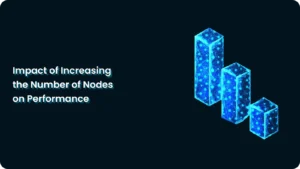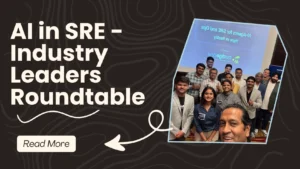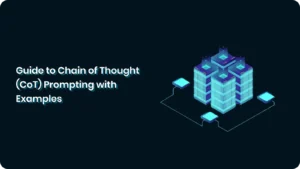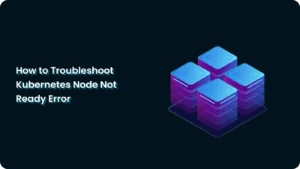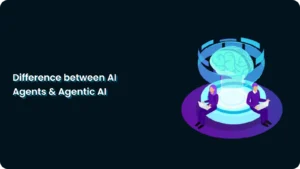AI SRE Guide 2025: Faster Troubleshooting, RCA, and MTTR

In 2025, Site Reliability Engineering (SRE) teams face unprecedented operational challenges: complex microservice dependencies, explosive alert volumes, and customer expectations for near-zero downtime. The traditional manual troubleshooting playbook, hopping between dashboards, grepping logs, and relying on tribal knowledge simply can’t keep pace with modern distributed systems.
The solution is an AI-powered troubleshooting approach that combines automated root cause analysis (RCA), structured MTTR reduction workflows, and a proven implementation playbook.
In this guide, you’ll learn:
- How AI RCA identifies root causes in seconds, not hours (Read the RCA deep dive →)
- Strategies to reduce MTTR by 50–75% (See MTTR reduction guide →)
- How to roll out AI troubleshooting step-by-step (Follow implementation playbook →)
Whether you’re starting fresh or scaling an existing platform, these practices will help you resolve incidents faster, prevent repeat outages, and make reliability a competitive advantage.
Table of Contents
- Why Traditional SRE Troubleshooting Breaks Down in 2025
- The 2025 SRE Troubleshooting Methodology
- Building an Intelligent Troubleshooting Workflow
- Automated Root Cause Analysis
- Reducing MTTR by 75%
- Implementation Playbook for AI Troubleshooting
- Measuring Success: KPIs That Matter
- FAQ
Why Traditional SRE Troubleshooting Breaks Down in 2025
Legacy troubleshooting models fail in modern, cloud-native environments because:
| Pain Point | Symptoms | Business Impact |
|---|---|---|
| Alert Fatigue | 10,000+ daily alerts, high false-positive rate | Missed critical incidents, burnout |
| Siloed Data | Metrics, logs, traces in separate tools | Slow context switching, poor correlation |
| Reactive RCA | Post-mortem only | Extended outages, SLA penalties |
The 2025 SRE Troubleshooting Methodology
- An AI-enhanced process built around five stages:
- Learn — Post-incident reviews update playbooks and train AI models.
- Detect — Intelligent alerting reduces noise and correlates related events.
- Prioritise — AI classifies severity based on blast radius and SLO risk.
- Diagnose — RCA tools generate causal graphs from metrics, logs, and traces.
- Remediate — Guided or automated actions roll back, restart, or patch services.
Building an Intelligent Troubleshooting Workflow
Data Foundation
| Data Layer | Must-Have Signals | AI Enhancements |
|---|---|---|
| Metrics | CPU, memory, latency, error rate | Anomaly detection |
| Logs | Structured, request-scoped | Semantic search |
| Traces | Distributed spans | Causal linkage |
| Events | Deployments, OOMKills | Change-point analysis |
Pro Tip: Standardise on OpenTelemetry for consistent telemetry ingestion.
Decision-Tree Playbooks
Dynamic playbooks replace static runbooks, adapting to live incident data and integrating with automated workflows.
Automated Root Cause Analysis
(Full details in AI-Powered Root Cause Analysis for SREs →)
AI RCA transforms troubleshooting by:
- Correlating metrics, logs, traces, and changes in real time
- Identifying causality instead of just symptoms
- Recommending fixes based on historical resolution patterns
Impact Metrics:
- MTTR reduction: 75–90%
- MTTD reduction: 85–95%
- False positives reduced: 60–80%
Reducing MTTR by 75%
If your priority is faster recovery, our guide on Reducing MTTR with SRE Workflows breaks down practical strategies to shorten downtime.
Key strategies:
- AI-Powered Triage — Automate incident classification and severity scoring.
- Automated Remediation — Contain impact before human intervention.
- Framework-Driven Troubleshooting — Follow TRACE or similar for consistency.
- Optimised Escalation Paths — Integrate with Slack/Teams for instant updates.
Implementation Playbook for AI Troubleshooting
Phased approach:
- Weeks 1–2: Baseline MTTR, audit observability stack, identify high-impact services.
- Weeks 3–4: Pilot AI RCA on select services; train models on past incidents.
- Weeks 5–8: Expand coverage, build automation playbooks, integrate feedback loops.
Measuring Success: KPIs That Matter
| KPI | Target 2025 Benchmark |
|---|---|
| Mean Time To Detect (MTTD) | < 1 min |
| Mean Time To Resolve (MTTR) | ≥ 75% faster |
| Root Cause Accuracy | > 85% |
| Alert Volume Reduction | 70% lower |
“Looking for a tactical, step-by-step approach? Check out our AI SRE Troubleshooting Implementation Playbook for detailed workflows and commands.”
FAQ
Q: Will AI replace SREs?
No. AI handles repetitive correlation and remediation; humans focus on complex problem-solving.
Q: How do I integrate AI RCA into my stack?
Start with OpenTelemetry, centralised logging, and an AI platform that integrates with your existing observability tools.

